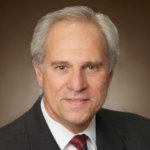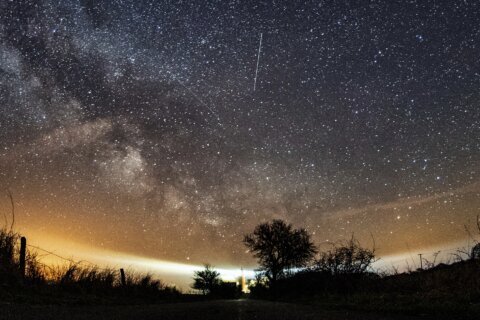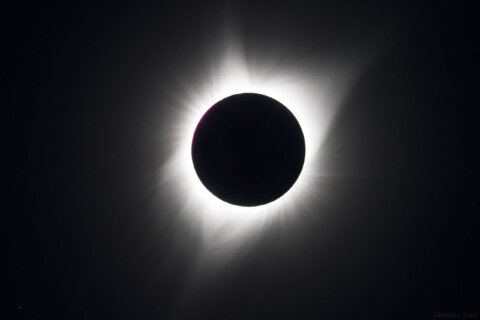This weekend marks NASA’s 65th anniversary. It was on July 29, 1958 that President Dwight Eisenhower signed into law the National Aeronautics and Space Act, which created the civilian space agency.
“President Eisenhower was determined that NASA be set up as a civilian space agency and he wanted the U.S. manned space effort to be apart from the military exploration of space,” said John Bisney, former space reporter and co-author of six photo books on the U.S. manned space program.
“The Defense Department was doing quite a bit in space and supported the U.S. space program, obviously from many standpoints in the early years, but that was a key reason that NASA was established … to both explore space and also to conduct aeronautical research. That’s the other ‘a’ in NASA.”
It was just three years after its founding that NASA launched the first American into space, Alan Shepard, in its Project Mercury program in which seven astronauts were selected to become America’s space pioneers.
“There was so much unknown. How would people function in space? Could you eat or drink? The reentry of a space vehicle. There was no worldwide tracking network. The U.S. Navy had never recovered spacecraft in the ocean before,” Bisney said. “So there was so much to learn. But the other thing about Project Mercury that’s astonishing to me was it was all done in the analog world.”
He added that there wasn’t internet and fax machines at the time as “it was done with slide rules and telephone calls.”
In 1969, the space agency’s Apollo program would land the first people on the moon: Neal Armstrong and Buzz Aldrin, with Mike Collins at the controls of the mother ship circling the lunar surface.
“It pulled together millions of people from across the country, from contractors and subcontractors in almost every State of the Union and the best minds, the scientific minds in the aerospace world were at work on this and the government pumped money into it. So you put all that together and you give people a deadline and … to this day it’s held up as a testament really to what America can do when it has a goal and the motivation to do it,” Bisney said.
There were failures along the way which cost lives — including the Apollo 1 launchpad fire that killed three astronauts in 1967, and the loss of two seven-member space shuttle crews in the Challenger launch accident in 1986 and the Columbia accident in 2003.
“I think what NASA continues to embody is that you learn from your failures and move on. We’ve seen it in the Apollo program … we’ve seen it in the shuttle program with losing two orbiters,” Bisney said.
The space agency’s imprint on the Washington region has been significant. Since its start, the government’s civilian space agency has been shepherded from NASA’s headquarters building in the District. The D.C. region hosts the Goddard Space Flight Center in Prince George’s County, Maryland, which is one of 10 NASA field centers.
“Goddard is responsible for a lot of satellite data and tracking for the space agency,” Bisney said.
What have been the agency’s greatest triumphs in the past 65 years? Bisney said it’s hard to point one specific event, even though people typically think of the Apollo moon landing.
“People maybe forget the excellent planetary exploration NASA has done exploring all of the planets in the solar system with various probes and orbiters,” Bisney said. “They’ve brought back so much information about what’s going on in our own (solar system) neighborhood here and then sent these probes way out into Interstellar space.”
He said that it’s “inevitable” that people will land on Mars — however, there are some technical things that have to be solved first.
“The most recent thing of interest is there’s some talk of reviving nuclear propulsion to make the trip faster. The issue right now is it takes, I think about 18 months to get there and there’s radiation problems, you have to have a lot of shielding which is heavy,” Bisney said.
“And then you have to support the crew once they get there and the trip back and so forth and there’s only certain times you can do it … because of planetary alignment … I think it’ll happen … maybe within 30 years from now, but we’ll see.”








